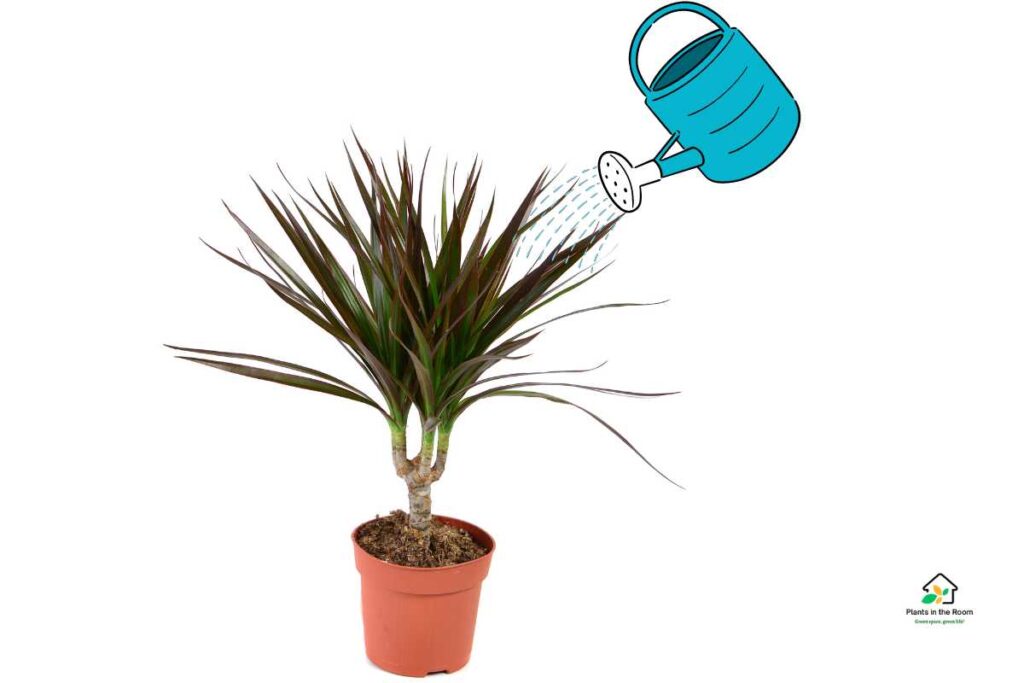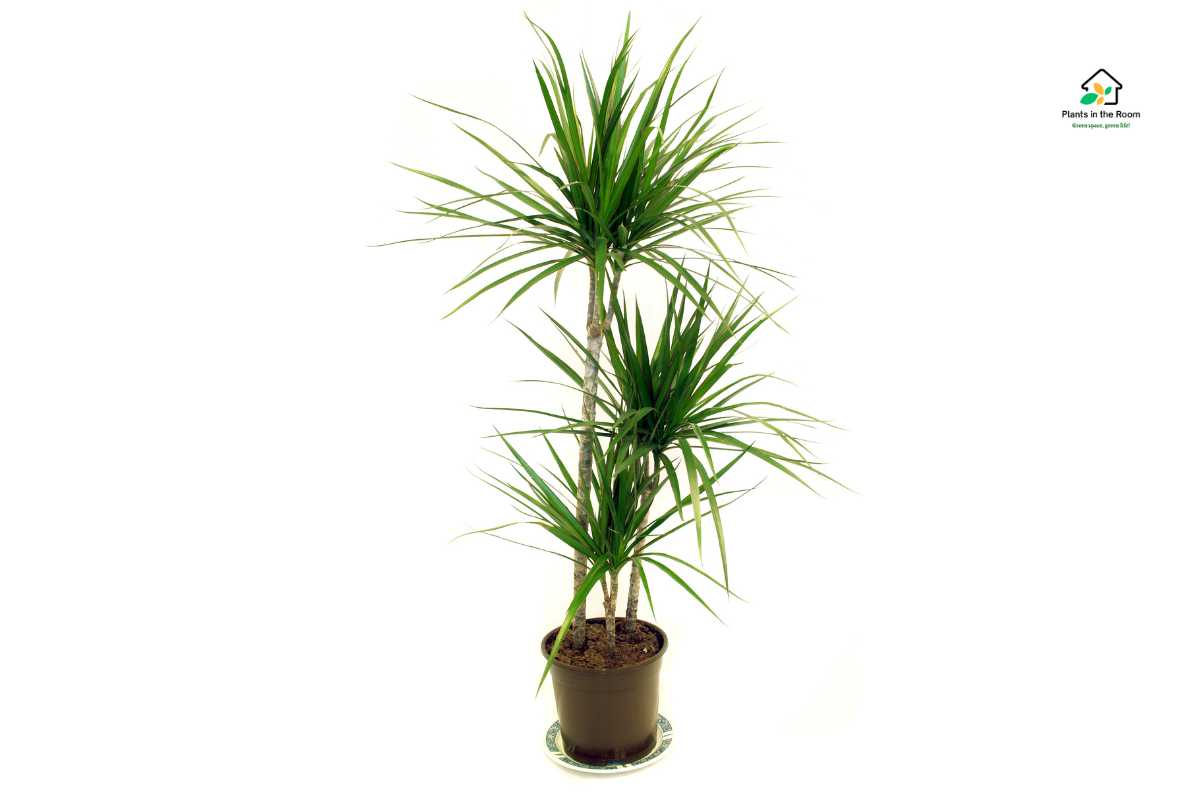This article covers the following areas –
- The Basics of the Dragon Tree
- Choosing the Right Dragon Tree
- Finding the Perfect Spot for Your Dragon Tree
- Potting and Soil Requirements
- How to Water Your Dragon Tree
- Tips for Fertilizing Your Dragon Tree
- Pruning and Shaping Your Dragon Tree
- Dealing with Common Pests and Diseases
- The Repotting Process of Your Dragon Tree
- The Propagation Process of Your Dragon Tree
- Final Words
- Get to Know Your Dragon Tree
As a passionate indoor plant enthusiast, I’ve always been drawn to the unique and striking appearance of the Dragon Tree. Over the years, I’ve had the opportunity to grow and care for numerous Dragon Trees in my home, and I’ve learned so much about how to help them thrive. In this post, I’ll share my knowledge and experience so that you, too, can enjoy the beauty of a healthy, flourishing Dragon Tree in your indoor space.
To care for a Dragon Tree, provide bright, indirect light, water when the top 1-2 inches of soil are dry, use a well-draining potting mix, maintain moderate humidity & 65-80°F (18-27°C) temperature, and fertilize every 4-6 weeks during growth. Watch for spider mites, mealybugs, and root rot.
I’ve much more to share on Dragon Tree care. Keep reading the post to discover more helpful tips, insights, and advice to help you create a thriving Dragon tree.
The Basics of the Dragon Tree
The Dragon Tree, also known as Dracaena marginata, is a popular and resilient indoor plant native to Madagascar. It is a member of the Asparagaceae family, including other well-known indoor plants like the snake and lucky bamboo.
The Dragon Tree is characterized by its slender, woody stems that branch out into a canopy of narrow, sword-shaped leaves with red or purple margins. Its striking appearance and relatively low-maintenance care requirements make it a popular choice for indoor gardeners.
Choosing the Right Dragon Tree
Selecting the perfect Dragon Tree for your home involves considering factors like the plant’s appearance, size, and specific care requirements. Each variety has its unique characteristics, making it important to choose one that best suits your preferences and the conditions in your home.
There are four most common types of Dragoon Trees. No matter which variety you choose, the care requirements are largely the same, so pick one that appeals to your personal aesthetic. The following table shows some popular varieties of Dragon trees and their distinguishing features.
| Variety | Description | Mature Size | Light Requirements |
|---|---|---|---|
| Tricolor | Green leaves with red edges and yellow or cream center stripe | 6-8 feet | Bright, indirect light |
| Colorama | Predominantly red and pink leaves with green edges | 6-8 feet | Bright, indirect light |
| Bicolor | Deep green leaves with striking red margins | 6-8 feet | Bright, indirect light |
| Magenta | Dark green leaves with bold magenta edges | 6-8 feet | Bright, indirect light |
Note: All varieties share similar care requirements and can tolerate lower light conditions. The colors may be less vibrant in lower light.
Finding the Perfect Spot for Your Dragon Tree
To ensure your Dragon Tree thrives and grows optimally, placing it in the right spot in your home is crucial. This involves considering factors like light, temperature, and humidity. Here’s a more detailed look at these factors and how to find the perfect spot for your Dragon Tree.
Light Requirements
Dragon Trees are versatile in light, thriving in bright, indirect light but also adapting to lower light conditions. If you have a room with large windows that receive plenty of sunlight, this would be an ideal spot for your Dragon Tree.
North or east-facing windows are particularly suitable, providing consistent, gentle light throughout the day. You can also place your Dragon Tree near a south or west-facing window, but make sure to protect it from harsh, direct sunlight with sheer curtains or by moving it back from the window.
If your space has limited light, the Dragon Tree can still do well, although its growth may be slower, and the colors in its leaves may be less vibrant. In low light conditions, place your Dragon Tree in a spot where it can still receive some natural light, such as near a window with filtered sunlight or a brightly lit room.
Temperature
Dragon Trees prefer a consistent temperature range of 65-80°F (18-27°C), making them suitable for most indoor environments. To maintain a consistent temperature, avoid placing your Dragon Tree near drafts, heating vents, or air conditioning units, as sudden fluctuations in temperature can cause stress to the plant.
Also, avoid positioning the plant near windows or doors that may be opened frequently, leading to cold drafts in winter or excessive heat in summer.
Humidity
While Dragon Trees can tolerate moderate humidity levels, they appreciate slightly higher humidity, especially in warmer months. If your home is particularly dry, you can increase the humidity around your Dragon Tree by placing a tray filled with water and pebbles under the pot, ensuring that the bottom of the pot doesn’t touch the water. As the water evaporates, it will create a more humid microclimate around the plant. You can also mist the plant occasionally with water, but avoid misting the leaves directly, as this can lead to water spots or fungal issues.
In summary, finding the perfect spot for your Dragon Tree involves considering light, temperature, and humidity. By paying attention to these factors and adjusting your plant’s location as needed, you can create the ideal environment for your Dragon Tree to grow and thrive.
Potting and Soil Requirements
Dragon Trees have relatively small root systems, so they don’t need a very large pot to thrive. When selecting a pot, make sure it has drainage holes to prevent water from accumulating at the bottom, which can lead to root rot.
I recommend using a well-draining potting mix, such as a mix designed for cacti and succulents, or you can make your own by combining equal parts potting soil, perlite, and peat moss. This will ensure that your Dragon Tree has the proper drainage it needs to stay healthy.
How to Water Your Dragon Tree

Providing your dragon tree with the appropriate amount of water is vital to its health and longevity. Over-watering can lead to root rot and other issues, while under-watering can cause the leaves to wilt and eventually fall off. Here are some tips on how to water your Dragon Tree properly.
Tip 1: Assess the Soil Moisture
Before watering your Dragon Tree, check the moisture level of the soil. Allow the top 1-2 inches of soil to dry out completely between waterings. To do this, insert your finger or a moisture meter into the soil to determine its moisture content. If the soil feels dry at that depth, it’s time to water your plant.
Tip 2: Water Thoroughly and Evenly
When watering your Dragon Tree, be sure to water it thoroughly so the water reaches the entire root system. Apply water evenly to the soil surface, ensuring that all areas receive an adequate amount. Continue watering until you see water running out of the drainage holes at the bottom of the pot. This ensures that the roots have received enough water and helps to flush out any excess salts from the soil.
Tip 3: Drain Excess Water
After watering, allow the excess water to drain away from the pot. This is crucial to preventing root rot and other issues associated with over-watering. Never allow your Dragon Tree to sit in standing water, as this can lead to root suffocation and the development of fungal diseases. If you use a saucer under your plant, empty it promptly after the excess water drains.
Tip 4: Adjust Watering Schedule Based on Season and Environment
The frequency of watering your Dragon Tree will depend on factors like the pot size, the humidity in your home, and the season. Generally, Dragon Trees require more frequent watering during the warmer months when they are actively growing and less frequent watering in the cooler months when their growth slows.
You may need to water your plant every 7-10 days in the summer, while in winter, the interval between waterings may increase to every 2-3 weeks.
Tip 5: Monitor Your Plant’s Health
Pay close attention to your Dragon Tree’s health, as its appearance can provide clues about its watering needs. If the leaves are wilting or turning yellow, you may be over-watering or under-watering your plant. Adjust your watering schedule accordingly, and watch your plant to ensure it recovers.
Tips for Fertilizing Your Dragon Tree
The right nutrients are essential for its growth, health, and overall appearance. Fertilizing your plant during its active growth period will ensure it has the necessary nutrients to thrive. Here are some tips for fertilizing your Dragon Tree.
#1 Choose the Right Fertilizer
Select a balanced liquid fertilizer specifically designed for houseplants. A balanced fertilizer will contain equal proportions of nitrogen (N), phosphorus (P), and potassium (K), such as a 10-10-10 or 20-20-20 formula. These nutrients promote healthy foliage, root development, and overall plant growth.
#2 Follow Package Instructions for Dilution
Always follow the package instructions for the proper dilution of the fertilizer. Over-fertilizing can lead to nutrient imbalances, burnt foliage, and other issues. If you’re unsure about the concentration, it’s safer to err on the side of caution and use a slightly more diluted solution than recommended.
#3 Fertilize During the Growing Season
Fertilize your Dragon Tree every four to six weeks during the growing season (spring and summer). The plant is actively growing during this period and will benefit from the additional nutrients. Apply the diluted fertilizer evenly around the base of the plant, taking care not to splash it directly onto the leaves.
#4 Reduce Fertilization in Fall and Winter
As the growing season ends, reduce or eliminate fertilizing your Dragon Tree. During the fall and winter months, the plant’s growth slows, requiring fewer nutrients. Continuing to fertilize during this period can lead to nutrient build-up in the soil and potential damage to your plant.
#5 Monitor Your Plant’s Health
Keep an eye on your Dragon Tree’s health to determine if it’s receiving the proper nutrients. Signs of nutrient deficiency may include yellowing leaves, slow growth, or weak stems. If you notice any of these symptoms, consider adjusting your fertilization schedule or the concentration of the fertilizer.
Pruning and Shaping Your Dragon Tree
As your Dragon Tree grows, it may become leggy or top-heavy. Pruning can help to maintain its shape and encourage branching. To prune your Dragon Tree, use clean, sharp pruning shears to remove any unwanted stems or leaves. You can also cut back the main stem to a desired height, and new branches will eventually emerge from the cut.
To shape your Dragon Tree and encourage a more compact, bushier growth habit, you can pinch off the growing tips of the branches. This will stimulate the plant to produce more side shoots, resulting in a fuller appearance. Remember that pruning and shaping are best done during the growing season, as this is when your Dragon Tree will have the energy to produce new growth.
Dealing with Common Pests and Diseases

Maintaining the health of your Dragon Tree involves not only providing proper care but also being vigilant against common pests and diseases that can affect your plant. Here’s a more detailed look at the pests and diseases you might encounter and how to deal with them effectively.
| Issue | Symptoms | Treatment |
|---|---|---|
| Spider Mites | Yellowing leaves, wilting, leaf drop, fine webbing | 1. Isolate plant. 2. Apply insecticidal soap/neem oil on all surfaces. 3. Repeat every 7-10 days until controlled. |
| Mealybugs | Yellowing leaves, curling leaves, white cottony clusters | 1. Dab insects with an alcohol-soaked swab or spray plant with insecticidal soap/neem oil. 2. Repeat until eradicated. |
| Scale Insects | Yellowing leaves, leaf drop, hard-shelled insects on stems | 1. Scrape insects off gently. 2. Apply insecticidal soap/neem oil to plant surfaces. 3. Repeat as needed to eliminate. |
| Root Rot | Wilting, yellowing leaves, foul smell from soil | 1. Prevent by drying soil & using well-draining mix. 2. If affected, repot, remove diseased roots & replace soil. |
The Repotting Process of Your Dragon Tree
Repotting is an essential aspect of indoor plant care that helps ensure the continued health and growth of your Dragon Tree. Let me walk you through the repotting process step by step, providing you with the necessary tips and techniques to make the transition smooth and stress-free.
- Determine when to repot: Dragon Trees generally need repotting every two to three years. Observe your plant’s growth and root development to decide when it’s time for a larger pot.
- Choose the right pot: Select a new pot that is only slightly larger than the current one. Using a pot that is too large can lead to root rot.
- Prepare the potting mix: Use a fresh, well-draining potting mix suitable for Dragon Trees. You can either purchase a pre-mixed blend or make your own by combining equal parts of peat moss, perlite, and potting soil.
- Remove the plant: Gently remove the Dragon Tree from its current pot, being careful not to damage the roots. To make this easier, you can water the plant a day before repotting, which will help loosen the soil around the roots.
- Inspect and trim the roots: Examine the root system for any damaged, rotting, or excessively long roots. Use clean, sharp scissors or pruning shears to trim away any unhealthy roots.
- Fill the new pot: Add a layer of the fresh potting mix to the bottom of the new pot, creating a base for the plant.
- Reposition the plant: Carefully place the Dragon Tree into the new pot, ensuring that it sits at the same depth as it did in the previous pot. Spread the roots out evenly over the fresh potting mix.
- Add more potting mix: Fill in the remaining space around the plant with the potting mix, gently tamping it down to remove air pockets and ensure that the roots are covered.
- Water the plant: Thoroughly water the repotted Dragon Tree, allowing excess water to drain from the pot’s drainage holes.
- Place the plant in its usual spot: Return the repotted Dragon Tree to its usual location, ensuring it receives the appropriate amount of light and care.
The Propagation Process of Your Dragon Tree
Propagating your Dragon Tree is an enjoyable and cost-effective way to expand your plant collection or share your love for this attractive indoor plant with friends and family. Here’s a detailed guide to help you successfully propagate your Dragon Tree through stem cuttings.
#1 Choose a healthy stem: Look for a strong, healthy stem on your Dragon Tree with at least one node (the point where leaves emerge). A healthy stem will be free of pests or diseases and have vibrant, green leaves.
#2 Make the cut: Using clean, sharp pruning shears or a knife, cut the stem at a 45-degree angle, ensuring the cutting is at least 4-6 inches long. The angled cut will increase the surface area for root development and helps prevent rot.
#3 Prepare the cutting: Remove any leaves from the lower half of the cutting. Allow the cut end to dry and callous over for a few days, which will reduce the risk of rot when it’s planted.
#4 Prepare the potting mix: Use a well-draining potting mix suitable for Dragon Trees, either a pre-mixed blend or your own mixture of equal parts peat moss, perlite, and potting soil.
#5 Plant the cutting: Fill a small pot (4-6 inches in diameter) with the prepared potting mix. Make a hole in the center with your finger or a pencil, and insert the calloused end of the cutting into the hole, ensuring that the node is buried beneath the soil.
#6 Firm the soil: Gently press the potting mix around the base of the cutting to provide support and ensure good contact with the soil.
#7 Create a humid environment: To maintain consistent moisture around the cutting, you can create a mini greenhouse by covering the pot with a clear plastic bag or placing it in a propagation chamber. Ensure adequate ventilation by opening the bag or chamber daily to release excess moisture and prevent mold.
#8 Provide warmth and light: Place the cutting in a warm, bright location with indirect sunlight. The ideal temperature for root development is between 70-75°F (21-24°C).
#9 Water and wait: Keep the potting mix consistently moist but not soggy by misting or watering as needed. Over-watering can lead to rot, so be careful not to overdo it.
#10 Monitor for root development: In 4-8 weeks, you should start to see new roots forming, which you can check by gently tugging on the cutting. If it resists, roots are likely developing. Be patient, as root development can take some time.
#11 Care for the new plant: Once your cutting has established a healthy root system, treat it like a mature Dragon Tree, providing proper light, water, and fertilization. Watch your new Dragon Tree grow and thrive!
By following this guide, you’ll soon have a new Dragon Tree to enjoy or share with others. Propagation is a rewarding way to expand your plant collection and deepen your connection with your indoor garden.
Final Words
With proper care, including the right light conditions, well-draining soil, and a consistent watering schedule, your Dragon Tree will thrive and grow into a beautiful, eye-catching focal point. By following the tips and advice in this post, you’ll be well on your way to becoming a Dragon Tree expert, ready to share your knowledge and passion with others.
Get to Know Your Dragon Tree
| Indicator | Dragon Tree |
|---|---|
| Family | Asparagaceae |
| Genus | Dracaena |
| Common Name | Dragon Tree, Madagascar Dragon Tree |
| Origin | Madagascar |
| Plant Type | Evergreen perennial |
| Mature Size | Up to 6-8 feet indoors, depending on variety |
| Growth Rate | Moderate |
| Light Requirements | Bright, indirect light (tolerates lower light conditions) |
| Watering Requirements | Allow the top 1-2 inches of soil to dry between waterings |
| Soil Preference | Well-draining, cactus/succulent potting mix or a mix of potting soil, perlite, and peat moss |
| Temperature Tolerance | 65-80°F (18-27°C) |
| Humidity Tolerance | Moderate humidity |
| Fertilization | Every 4-6 weeks during the growing season with a balanced liquid fertilizer |
| Propagation | Stem cuttings |
| Pests | Spider mites, mealybugs, scale insects |
| Diseases | Root rot |
| Toxicity | Mildly toxic to pets, non-toxic to humans |
| Special Features | Architectural form, attractive foliage, air-purifying qualities |
| Popular Uses | Indoor decoration, container gardening, office spaces, focal point in living areas |
I hope you found my write-up helpful and informative. I’d love to hear your thoughts, experiences, or questions in the comments section below. Sharing your insights and knowledge helps our community grow and learn together.
Happy planting!






